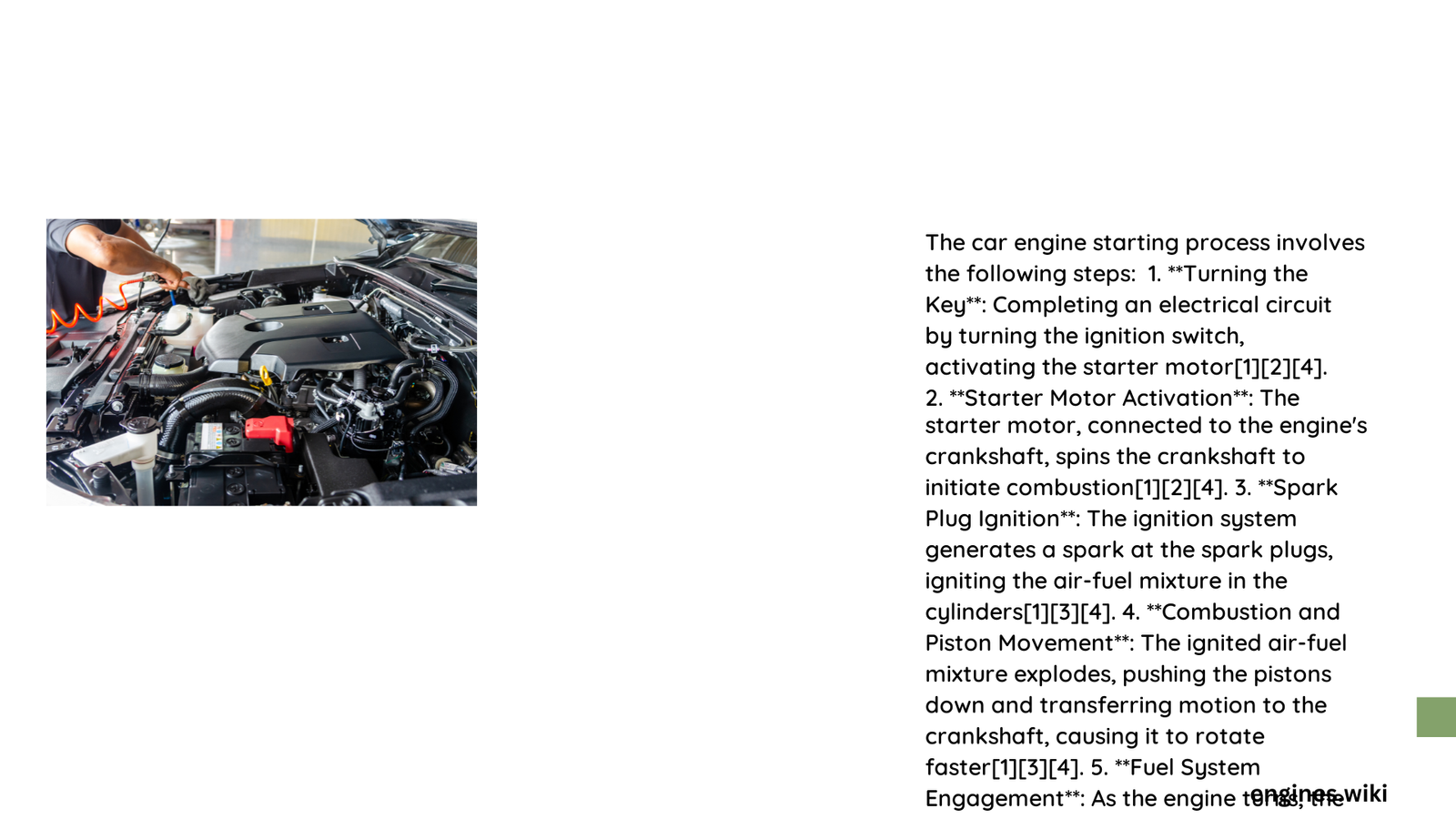The car engine starting process is a complex orchestration of electrical, mechanical, and chemical interactions that transform potential energy into kinetic motion. When a driver turns the key or presses the start button, a precise sequence of events occurs involving the battery, starter motor, ignition system, and fuel delivery mechanism to breathe life into an automobile’s powerplant.
What Happens During Initial Engine Activation?
The car engine starting process involves multiple critical stages that must synchronize perfectly to transform a stationary vehicle into a moving machine. Understanding these intricate mechanisms helps drivers diagnose potential issues and maintain their vehicle’s reliability.
How Does Battery Initiate the Starting Sequence?
The battery serves as the primary electrical reservoir, providing crucial initial energy for the entire starting mechanism. When activated, it delivers approximately 12.6 volts to critical electrical components:
| Component | Voltage Requirement | Function |
|---|---|---|
| Starter Motor | 12-14 volts | Cranks engine |
| Ignition System | 12 volts | Generates spark |
| Fuel Pump | 12 volts | Pressurizes fuel system |
Key Battery Performance Metrics
- Minimum Voltage: 12.4 volts when engine is off
- Cranking Voltage: Should not drop below 10 volts
- Cold Cranking Amps (CCA): Meets manufacturer specifications
What Role Does Starter Motor Play?
The starter motor transforms electrical energy into mechanical rotation, engaging with the engine’s flywheel to initiate the initial crankshaft movement. Its primary functions include:
- Converting electrical current into rotational force
- Engaging and disengaging from the flywheel
- Generating sufficient torque to overcome engine compression
How Do Fuel Systems Contribute?
Fuel delivery represents another crucial aspect of the car engine starting process:
- Fuel Pump Activation: Pressurizes fuel system
- Fuel Injector Operation: Precisely meters fuel quantity
- Fuel Pressure: Maintained between 30-50 PSI
What Triggers Spark Generation?
The ignition system creates the electrical spark necessary for fuel combustion:
- Ignition Coil: Converts battery voltage (12V) to high-voltage spark
- Spark Plug: Generates spark at precise cylinder timing
- Voltage Range: 5,000 to 30,000 volts
Diagnostic Troubleshooting Strategies
Effective diagnosis requires systematic approach:
- Check battery voltage
- Test starter motor amperage
- Verify fuel pressure
- Inspect spark plug condition
- Examine wiring connections
Common Startup Challenges
Potential issues preventing successful engine start:
- Weak battery
- Faulty starter motor
- Clogged fuel filter
- Malfunctioning ignition coil
- Contaminated spark plugs
Technical Recommendations

Drivers should:
– Perform regular battery health checks
– Maintain clean fuel systems
– Replace spark plugs at recommended intervals
– Use high-quality engine oil
– Keep electrical connections clean and tight
Preventive Maintenance Tips
- Annual battery load testing
- Quarterly fuel system inspection
- Biannual spark plug evaluation
- Regular electrical system diagnostics
Conclusion
Understanding the car engine starting process empowers vehicle owners to recognize potential issues, perform basic diagnostics, and maintain optimal engine performance.
